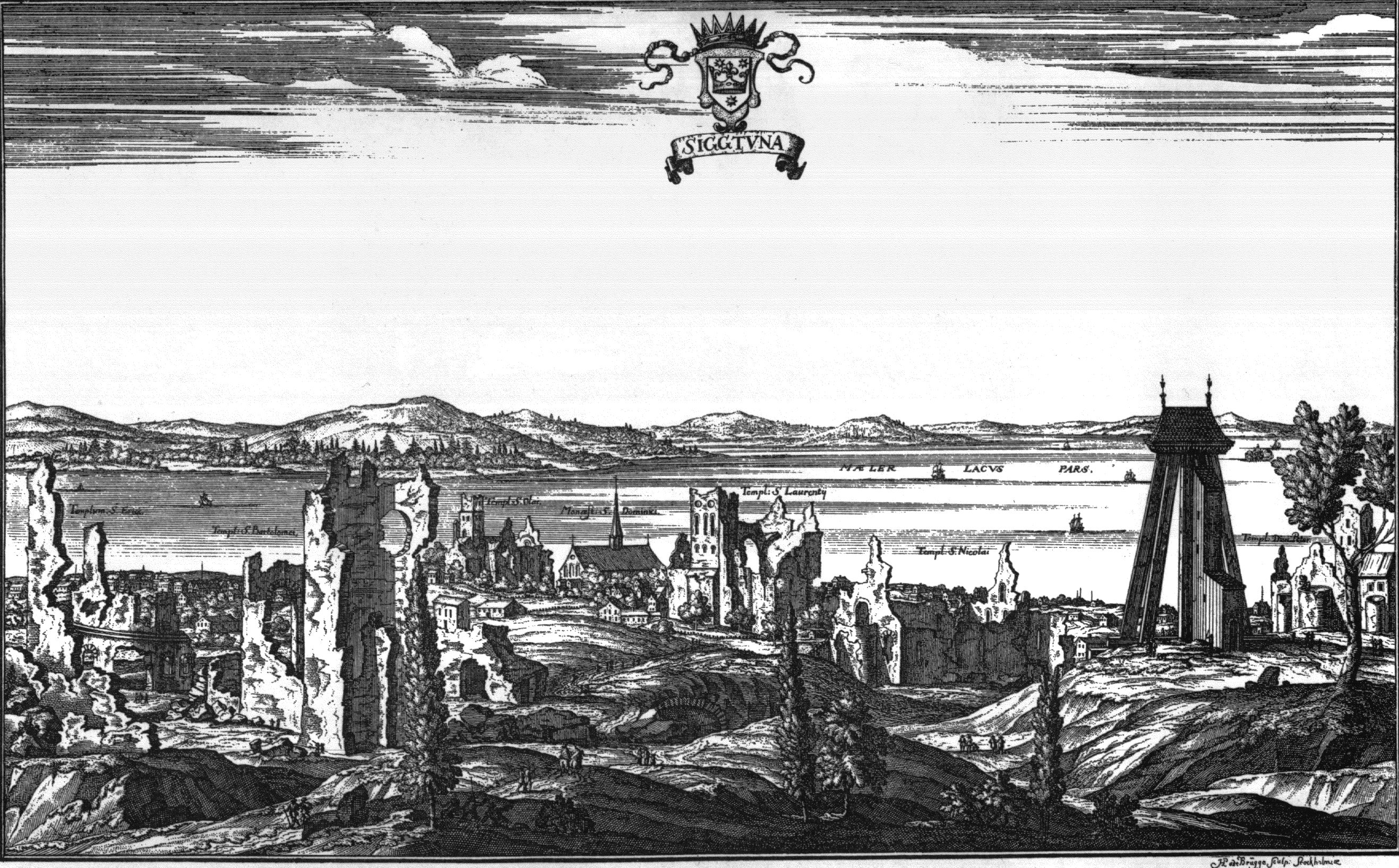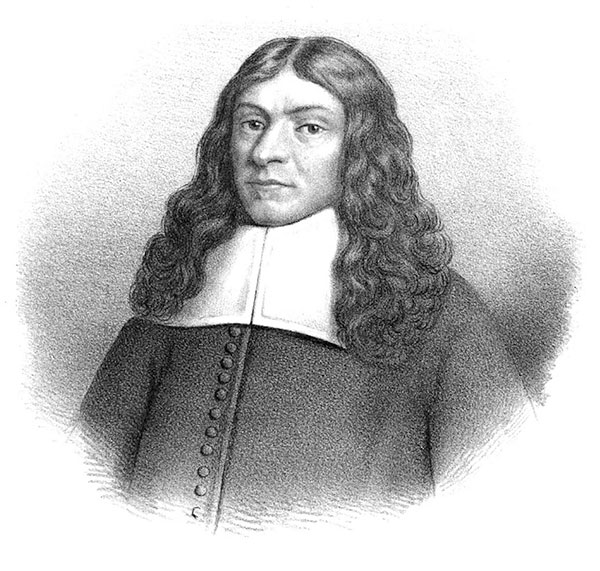|
Norrtil Runestones
The Norrtil Runestones are two monuments listed in Rundata as U 410 and U 411, standing at Norrtil, Saint Olovs parish, Uppland, Sweden. Both runestones were erected at the second part of 11th century along the ancient road leading from Sigtuna to already existed at that time settlement of Til. U 410 The stone is located on the south-eastern side of a hill , which was evidently a local burial ground in the Viking Age. Several graves of that period marked by stone settings are in the near proximity to the monument. Material is grey granite. Height — 1.55 m, width — 0.75 m. The inscription is partly damaged due to the stone surface is subject to flaking. Lost text fragments fortunately reconstructed with help of older drawings, the first of which was made by Johan Hadorph in 1682. Runes are carved on the bodies of two serpents which have their heads and tails bound together. The cross is placed in the middle. Transliteration into Latin characters : × sturbiarn • l t • rai ... [...More Info...] [...Related Items...] OR: [Wikipedia] [Google] [Baidu] |
Rundata
The Scandinavian Runic-text Data Base ( sv, Samnordisk runtextdatabas) is a project involving the creation and maintenance of a database of runic inscriptions. The project's goal is to comprehensively catalog runestones in a machine-readable way for future research. The database is freely available via the Internet with a client program, called Rundata, for Microsoft Windows. For other operating systems, text files are provided or a web browser can be used to interact with the web applicatioRunor History The origin of the Rundata project was a 1986 database of Swedish inscriptions at Uppsala University for use in the Scandinavian Languages Department. At a seminar in 1990 it was proposed to expand the database to cover all Nordic runic inscriptions, but funding for the project was not available until a grant was received in 1992 from the ''Axel och Margaret Ax:son Johnsons'' foundation. The project officially started on January 1, 1993 at Uppsala University. After 1997, the proje ... [...More Info...] [...Related Items...] OR: [Wikipedia] [Google] [Baidu] |
Uppland
Uppland () is a historical province or ' on the eastern coast of Sweden, just north of Stockholm, the capital. It borders Södermanland, Västmanland and Gästrikland. It is also bounded by lake Mälaren and the Baltic Sea. On the small uninhabited island of Märket in the Baltic, Uppland has a very short and unusually shaped land border with Åland, an autonomous province of Finland. The name literally means ''up land'', a name which is commonly encountered in especially older English literature as ''Upland''. Its Latinised form, which is occasionally used, is ''Uplandia''. Uppland is famous for having the highest concentration of runestones in the world, with as many as 1,196 inscriptions in stone left by the Vikings. Administration The traditional provinces of Sweden serve no administrative or political purposes, but are historical and cultural entities. The corresponding administrative county, or ', is Uppsala County, which occupies the larger part of the territory ... [...More Info...] [...Related Items...] OR: [Wikipedia] [Google] [Baidu] |
Runestone
A runestone is typically a raised stone with a runic inscription, but the term can also be applied to inscriptions on boulders and on bedrock. The tradition began in the 4th century and lasted into the 12th century, but most of the runestones date from the late Viking Age. Most runestones are located in Scandinavia, but there are also scattered runestones in locations that were visited by Norsemen during the Viking Age. Runestones are often memorials to dead men. Runestones were usually brightly coloured when erected, though this is no longer evident as the colour has worn off. The vast majority of runestones are found in Sweden. History The tradition of raising stones that had runic inscriptions first appeared in the 4th and 5th century, in Norway and Sweden, and these early runestones were usually placed next to graves. The earliest Danish runestones appeared in the 8th and 9th centuries, and there are about 50 runestones from the Migration Period in Scandinavia. Most runeston ... [...More Info...] [...Related Items...] OR: [Wikipedia] [Google] [Baidu] |
Sigtuna
Sigtuna () is a locality situated in Sigtuna Municipality, Stockholm County, Sweden with 8,444 inhabitants in 2010. It is the namesake of the municipality even though the seat is in Märsta. Sigtuna is for historical reasons often still referred to as a ''stad''. Modern-day Sigtuna, a harbor town that was established around 980, developed approximately 4 kilometres east of Old Sigtuna (which, according to Norse mythology, was previously the home of Odin). Sigtuna has a medieval-style town centre with restaurants, cafes and small shops. The old church ruins, runic stones and the old main street (''Stora gatan'') are popular attractions for tourists, especially in the summertime. The small streets with low-built wooden houses lead up to several handicrafts shops and the old tiny town hall (''Sigtuna Rådhus''). There are restaurants and ''Sigtuna Stadshotell'', a hotel in the town centre. Geography Sigtuna is situated at the bay Skarven, stretching around Upplands-Bro a ... [...More Info...] [...Related Items...] OR: [Wikipedia] [Google] [Baidu] |
Fornvännen
''Fornvännen'' ("The Friend of the Distant Past"), ''Journal of Swedish Antiquarian Research'' is a Swedish academic journal in the fields of archaeology and Medieval art. It is published quarterly by the Royal Swedish Academy of Letters, History and Antiquities in Stockholm, Sweden. The journal's contributions are written in the Scandinavian languages, English, or German with summaries in English. The editor-in-chief An editor-in-chief (EIC), also known as lead editor or chief editor, is a publication's editorial leader who has final responsibility for its operations and policies. The highest-ranking editor of a publication may also be titled editor, managing ... is Mats Roslund. The Editorial Board practices double blind peer review with external reviewers. ''Fornvännen'' began publication in 1906 when it replaced two earlier journals, ''Svenska Fornminnesföreningens Tidskrift'' and ''Vitterhetsakademiens Månadsblad''. Early contributors included noted archaeologists ... [...More Info...] [...Related Items...] OR: [Wikipedia] [Google] [Baidu] |
Swedish National Heritage Board
The Swedish National Heritage Board ( sv, Riksantikvarieämbetet; RAÄ) is a Swedish government agency responsible for World Heritage Sites and other national heritage monuments and historical environments. It is governed by the Ministry of Culture. The goals of the agency are to encourage the preservation and protection of historic environments and to promote the respect for and knowledge of historic environments. In order to do this, it tries to ensure that Swedish heritage is accessible to all citizens, to spread information about that heritage, and to "empower heritage as a force in the evolution of a democratic, sustainable society". History 17th and 18th century The National Heritage Board was founded in 1630. On the 20May that year, Johannes Bureus who was a prominent rune researcher and King Gustavus Adolphus' private teacher, was appointed the first ''riksantikvarien'' ("National Antiquarian"). Bureus' teachings had made the king interested in ancient monuments ... [...More Info...] [...Related Items...] OR: [Wikipedia] [Google] [Baidu] |
U410 Norrtil
{{disambiguation ...
U41 may refer to: * Ditrigonal dodecadodecahedron * Dubois Municipal Airport (Idaho) * , various vessels * , a submarine of the Austro-Hungarian Navy * Small nucleolar RNA SNORD41 * U41, a line of the Dortmund Stadtbahn __NOTOC__ The Dortmund Stadtbahn is a light rail system in the German city of Dortmund and is integrated in the Rhine-Ruhr Stadtbahn network. Its network consists of eight lines and is operated by Dortmunder Stadtwerke, which is operating un ... [...More Info...] [...Related Items...] OR: [Wikipedia] [Google] [Baidu] |
Viking Age
The Viking Age () was the period during the Middle Ages when Norsemen known as Vikings undertook large-scale raiding, colonizing, conquest, and trading throughout Europe and reached North America. It followed the Migration Period The Migration Period was a period in European history marked by large-scale migrations that saw the fall of the Western Roman Empire and subsequent settlement of its former territories by various tribes, and the establishment of the post-Roman ... and the Germanic Iron Age. The Viking Age applies not only to their homeland of Scandinavia but also to any place significantly settled by North Germanic peoples, Scandinavians during the period. The Scandinavians of the Viking Age are often referred to as ''Vikings'' as well as ''Norsemen'', although few of them were Vikings in sense of being engaged in piracy. Voyaging by sea from their homelands in Denmark, Norway, and Sweden, the Norse people settled in the Viking activity in the British Is ... [...More Info...] [...Related Items...] OR: [Wikipedia] [Google] [Baidu] |
Johan Hadorph
Johan Hadorph (May 6, 1630 – July 12, 1693) was a Swedish director-general of the Central Board of National Antiquities. He was appointed National Antiquarian at the government agency for antiquities, and he became its director-general. Hadorph documented ancient monuments during extensive voyages in Sweden. He collected a great many older manuscripts, such as collections of laws. He also made many drawings of runestones,Liedgren 1967–69:697 and supervised the production of more than 1000 woodcuts of runestones. Family and nobility He was born at Haddorp manor in Slaka parish in Östergötland, Sweden to Nils Jönsson, who belonged to the Lindsbrosläkten, the Lindsbro family, an old family traceable to the 14th century, and his wife Anna Hansdotter of the old family Upplänning. His father was the head of a royal farm (''kronohemman''). and a bailiff of Linköping whose brother, Olof, became the progenitor of the noble family Stiernadler. His mother was the daughter of t ... [...More Info...] [...Related Items...] OR: [Wikipedia] [Google] [Baidu] |
Elias Wessén
Elias Wessén (15 April 1889 – 30 January 1981) was a prominent Swedish linguist and a professor of Scandinavian languages at Stockholm University (1928–1956). In 1947, he was honoured with one of the 18 seats at the Swedish Academy (which for instance awards the Nobel Prize in Literature). His earliest work concerned morphological problems in the Germanic languages, Onomasiology and Norse mythology. He published parts of ''Sveriges runinskrifter'', editions of medieval texts and together with Åke Holmbäck, a translation of the Swedish medieval province laws (with commentaries). He published several reference works, such as ''Svensk språkhistoria'' in three tomes, and a grammar for modern Swedish ''Vårt svenska språk''. In 1944, he initiated ''Nämnden för svensk språkvård'' (nowadays ''Språkrådet'', the Swedish Language Council). (in |
Värend
Värend was in the Middle Ages the most populous of the constituent "small lands" of the province Småland, in Sweden. Early on, Växjö became its center. Around 1170, Värend broke out of the diocese of Linköping, and formed its own diocese of Växjö. Judicially, Värend was a part of "Tiohärad", which roughly corresponds to present-day Kronoberg County. It consists of the hundreds, or ''härader'', Allbo Hundred, Kinnevald Hundred A hundred is a geographic division formerly used in northern Germanic countries and related colonies, which historically was used to divide a larger region into smaller administrative divisions. The equivalent term in Swedish is (in Uppland a ..., Konga Hundred, Norrvidinge Hundred and Uppvidinge Hundred. References See also * Blenda * Warini Småland {{Kronoberg-geo-stub ... [...More Info...] [...Related Items...] OR: [Wikipedia] [Google] [Baidu] |





